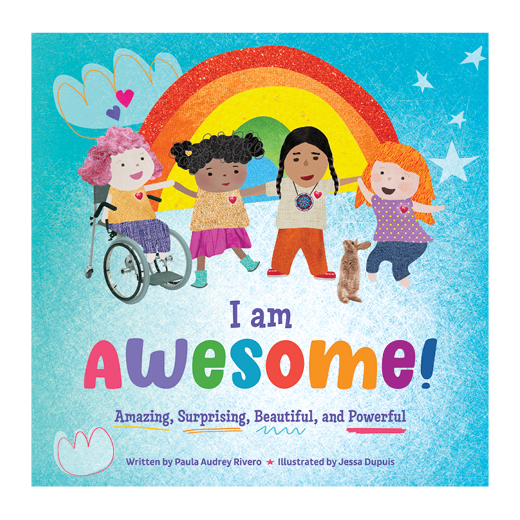Meltdowns: Triggers, Supports, and More
People of all ages and abilities, particularly those with more sensitivities and processing difficulties than others, can experience meltdowns at any ages and stages of life.
Meltdowns are a common concern of clients at Qi Creative, and we’d like to take the time to explain more about what meltdowns are, how they can happen, and how you can prepare, prevent, and reduce the severity of meltdowns when they occur.
What is a Meltdown?
A meltdown is an involuntary response to an overload of our nervous system. Meltdowns can be triggered by difficulties with sensory processing, communication, and emotional regulation.
Meltdowns can be very intense, and present differently from person to person. Each of us are born with sensory systems that help us to decipher and interact with information in our environments (sight, sound, smell, touch, taste, interoception, proprioception), but those who may be born with or acquire an impaired nervous system during their lifetime may decipher sensory inputs differently, which may lead to being dysregulated more easily than others.
Meltdowns Are Not Tantrums
Meltdowns are not the same thing as tantrums; tantrums are more emotional outbursts with a specific goal or reward in mind (eg. Having a tantrum to try to get something, stay at a desired place for longer, get a change of opinion), and typically need an audience (eg. Guardian, teacher, aide, spouse) to be on the receiving end of a tantrum—whereas a person experiencing a meltdown may not feel in control of their behaviors and can meltdown regardless of the presence of other people.
Meltdown Behaviors and Reactions
Meltdowns can look and feel differently from person to person, but some ways that meltdowns can be expressed are:
Physical (kicking, rocking, finger flicking, pacing, hitting, covering ears or eyes, leaving a room or venue, destroying items, laying on the ground)
Emotional (agitation, crying, withdrawing)
Verbal (screaming, crying, repeating words or sentences)
Shut Down (little to no external output, flat affect, staying in bed for hours/days)
Meltdowns can happen to children, adolescents, and adults of all abilities, but especially those on the autism spectrum and those with other developmental disabilities.
Rumbling and Meltdowns
Have you ever felt uncomfortable in a public place and wished to leave, but couldn’t do so right away? How did that make you feel? What did you do to pass the time? What if there wasn’t an easy or timely option to leave and take care of yourself? Does reading this paragraph stress you out? 😱
People who have meltdowns can often exhibit behaviors that show distress leading up to a potential meltdown—these are called Rumblings. Rumblings can also be different for everyone and are a way to reach out to others, or try to self-manage in advance of, or in prevention of, a meltdown. For example:
Outright saying/communicating that you wish to leave
Physically moving to a quiet area (eg. bathroom in a restaurant, sitting in your car in the driveway of an unfamiliar house, basement of a house when the commotion is upstairs)
Deeply sighing or groaning, or saying upset or violent things
Body sensations (your skin feels more sensitive, your breathing gets heavier, your face feels hotter)
Changes in voice tone (louder, flatter)
Struggling with environmental and internal difficulties (eg. Takes longer to tie shoes AND feels more rushed about having to put shoes on)
What Triggers a Meltdown?
Many different things can trigger meltdowns, and just like the meltdowns themselves, it varies from person to person.
If you’re looking to support yourself or a loved one with their meltdowns, it is important to also take a look at what they go through in a given day or week, and what factors in an environment, routine, or interruption of a routine can lead to a meltdown.
Some possible triggers for a meltdown:
Rumbling state leading to a meltdown state (eg. trying to “push through” or “get over” rumblings without actually addressing the overwhelm one is experiencing)
Sensory overload (loud sounds, bright lights, strong smells, busy crowds)
Change in plan or routine (eg. Spontaneous family visit, school cancellation, major vacation)
Unmet needs (Hunger, thirst, pain, and/or discomfort goes unnoticed or ignored)
Anxiety or isolation (bullying, fear around engaging in social events or how to navigate a social event; social interaction ends negatively or confusingly)
Exhaustion from masking (keeping up a 'social mask’ of behaviors and processing and responding to outputs from the world around you for a prolonged period of time)
High demands (Parent, teacher, partner etc requests too many things at once, and/or requests with high importance; micromanagement; mounting deadlines)
Communication difficulties (unable to express thoughts, feelings or needs; repeated interruptions of your own thoughts/behaviors; unable to understand others; others around you communicate to you in confusing or overwhelming ways)
Fear of failure/rejection sensitivity (bullying, rejection from a friend, party, date)
Returning to an environment or circumstance that may have led to meltdowns in the past (eg. annual holiday dinner, working towards classroom inclusion)
Helping Ourselves Prevent Meltdowns
We all have our ways of taking care of ourselves, with preferred activities, places, and pursuits—ways in which we regulate ourselves, relate with our loved ones, and discuss and decompress from the ongoings of our lives.
Don’t hesitate to jot down a list of any of these could help you:
Check in with your body: temperature, tension, fatigue, hunger, thirst, pain—and address your bodily needs in the ways that you know will help (stretching, napping, drinking something you like, self-massage, deep breaths)
Check in with your brain (any intrusive thought patterns or self-disparaging thoughts)
Check in with your heart (are you sad, anxious, afraid, agitated)
Identify and avoid sensory triggers (specific clothes, music, discussion topics)
Give yourself regular breaks for sensory-heavy activities
Return to any routine activities as soon as possible
Use sensory tools or strategies to help regulate your sensory input (eg. fidget toys, books, music, games, social stories, weighted blankets and vests, aromatherapy)
Be kind to yourself, and don’t feel upset or ashamed if it takes extra time to bring you back to a regulated, balanced state
Help Others With Meltdowns
Analyzing your likes and dislikes, sensory preferences and aversions, and how friends and family can assist, can make all the difference in preventing meltdowns:
Inform and prepare for any changes in routine (give clear and consistent information on what to expect)
Use visual aids, or other communicative alternatives to help prepare for change, rather than just a single verbal reminder
Offer choices or alternatives to the change of routine, when possible
Acknowledge and support any emotions around the potential meltdown trigger
Create a safe space, or designated area where a person can go to relax and recover from a meltdown
Be patient and respectful, and follow your loved one’s lead in making sure they feel safe and supported in however ways they prefer
Get Support for Meltdowns
Meltdowns are a common concern for many families, and one that many of our Qi Creative coaches are equipped to help with! To get started, fill out our Intake Form (the rainbow button on the side of this page).
We hope this was an informative intro to what meltdowns can be like, how they can occur, and what you can do to prepare and prevent them. Meltdowns are nothing to be ashamed of, and are an important aspect to understand of anyone’s sensory likes, dislikes, and boundaries throughout one’s lifetime.
Meltdowns can be a recurring event throughout our lives, and through exploring strategies and working through it, we can prepare, prevent, and treat ourselves with respect.
Thanks for reading, and we hope you know a little more about your own sensory profile too!
More Information
11 Things Autistic People Say Can Trigger a Meltdown - The Mighty
Meltdowns & Calming Techniques in Autism - Autism Research Institiute
How Autistic Meltdowns Differ From Ordinary Temper Tantrums - Verywell Health
Meltdowns: autistic children and teenagers - Raising Children
Meltdowns and shutdowns - Ambitious About Autism
5 Ways to Deal with Adult Autistic Meltdowns - Psychology Today











